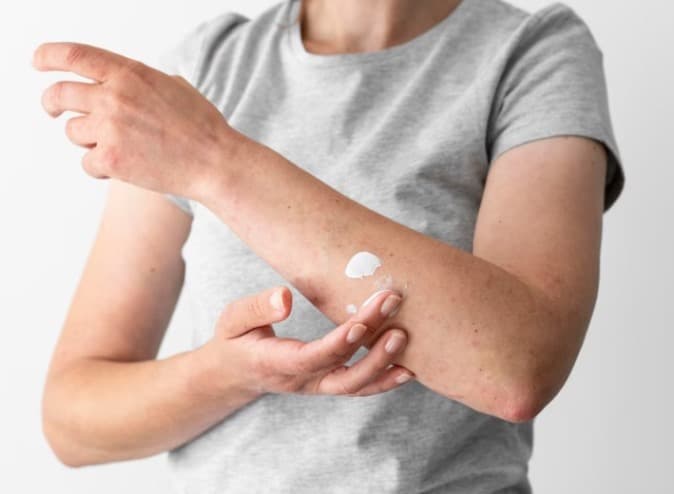How Do I Know If My Ringworm Is Getting Worse? Tips and Insights
Ringworm, medically known as dermatophytosis, is a common fungal infection that affects the skin, nails, and hair. While it’s typically not serious, it can be uncomfortable and sometimes challenging to manage.
You can determine if your ringworm is worsening by looking out for signs such as increased redness, persistent itching, changes in appearance, development of blisters or pus, spreading to new areas, and the ineffectiveness of over-the-counter treatments.
In this comprehensive guide, we’ll delve into the topic of how to determine if your ringworm is getting worse. We’ll cover signs, symptoms, treatment options, and helpful insights to ensure you have the knowledge you need to manage this pesky condition effectively.
Table of Contents
How Do I Know If My Ringworm Is Getting Worse?
Ringworm symptoms can vary from person to person, and it’s crucial to keep an eye out for any changes that might indicate the infection is worsening. Here are some key indicators to watch for:
Increased Redness and Irritation
One of the primary signs that your ringworm might be getting worse is an increase in redness and irritation around the affected area.
If you notice that the rash is spreading or the skin is becoming more inflamed, it’s a clear signal that the infection is progressing. Remember that some initial redness is common, but if it intensifies over time, it’s time to take action.
Persistent Itching and Discomfort
While itchiness is a hallmark of ringworm, a persistent and escalating itchiness could indicate worsening. As the infection spreads, the itching sensation may become more intense and widespread.
If scratching becomes unbearable and is interfering with your daily life, it’s a sign that your ringworm needs attention.
Changes in Appearance
Carefully observe the appearance of the ringworm patch. If you notice any changes in color, texture, or size, it could be a sign of deterioration.
An expanding or evolving rash might suggest that the infection is becoming more aggressive. Documenting these changes with photos can help you track the progression.
Development of Blisters or Pus
In some cases, a worsening ringworm infection might lead to the formation of blisters or the presence of pus. This is particularly concerning as it indicates a potential bacterial superinfection.
Blisters and pus-filled lesions require prompt medical evaluation and treatment.
Spreading to New Areas
Ringworm is highly contagious, and if you notice new patches of rash appearing in different areas of your body, it’s a clear indication that the infection is spreading.
This suggests that the initial measures you’ve taken to contain the infection might not be effective, and a more comprehensive approach is needed.
Ineffectiveness of Over-the-Counter Treatments
If you’ve been using over-the-counter antifungal creams for a reasonable period and haven’t seen any improvement, your ringworm might be worsening.
While these creams can be effective for mild cases, a lack of progress could signify a more advanced infection that requires stronger prescription treatments.
Understanding the Treatment Options
Successfully managing a worsening ringworm infection involves a combination of self-care practices and medical interventions. Here are some effective treatment options:
Prescription Antifungal Medications
When over-the-counter creams prove ineffective, your healthcare provider might prescribe oral antifungal medications. These medications work from within your body to eradicate the fungal infection. Be sure to follow your doctor’s instructions and complete the full course of treatment.
Topical Prescription Treatments
For localized infections, your doctor may recommend stronger prescription-strength antifungal creams or ointments. These can be applied directly to the affected area and are more potent than their over-the-counter counterparts.
Keeping the Area Clean and Dry
Maintaining good hygiene is essential for managing ringworm. Keep the affected area clean and dry, as fungi thrive in warm, moist environments. Regularly washing the area with mild soap and water can help prevent the infection from worsening.
Avoiding Sharing Personal Items
Ringworm is highly contagious, and sharing personal items like towels, clothing, and grooming tools can contribute to its spread. To prevent further infection or transmission, avoid sharing items and disinfect commonly used surfaces.
Natural Remedies and Complementary Therapies
Some individuals find relief from ringworm symptoms through natural remedies like tea tree oil, coconut oil, or apple cider vinegar. However, these should be used cautiously and in conjunction with medical treatments, as their effectiveness varies.
FAQs about Worsening Ringworm
Can ringworm lead to serious complications?
While ringworm is generally not serious, it can lead to complications if left untreated. These complications can include secondary bacterial infections, increased discomfort, and a prolonged healing process.
Is it normal for the affected area to become swollen?
Yes, some swelling is common with ringworm, especially as the infection progresses. If the swelling is severe, accompanied by redness and pain, consult a healthcare professional.
Can I exercise if I have a worsening ringworm infection?
Engaging in strenuous exercise while dealing with a worsening ringworm infection might exacerbate the symptoms. It’s advisable to avoid activities that cause excessive sweating and friction in the affected area.
Conclusion
Dealing with a worsening ringworm infection can be frustrating, but with timely and appropriate care, you can effectively manage the condition.
By staying vigilant and seeking medical guidance when needed, you can ensure a smooth recovery and prevent further complications. Remember, your health and well-being are a priority, so don’t hesitate to reach out to a healthcare professional if you suspect your ringworm is getting worse.
